Big, bulky dryers, always present issues when it comes to moving them. Most of us don’t have cars that we can just pop a dryer into. Not without flattening the seats and laying the dryer on its side. But mention laying an appliance on its side and you will encounter pursed lisps, gentle gasps, and raised eyebrows.
Ok, so maybe the reactions are not really that extreme, but most people will advise against it. But why? I’m going to present you with a different perspective; one that says it’s alright to transport dryers laying down as long as precautions are taken.

It is Ok to transport a dryer laying down, but this should only be done as a last resort. A dryer should not be transported on its back or its front, but it will withstand transportation on its side without sustaining any damage if done carefully and with sufficient padding.
Manufacturers Understand That Dryers Need to Be Transported
Owning a dryer will entail transporting it from time to time, whether when bringing it home or when moving house.
It is important to enquire of the retailer or to consult the owner’s manual about the best transportation methods for a dryer to keep it from being damaged in transit.
However, be careful when trusting retailers about transport advice. Especially if they offer transport themselves.
They get the delivery fee or often receive a commission on the transport service if they use a third-party, so always double-check their advice. They also say that you can’t transport a water heater on its side when it’s perfectly safe to do so.
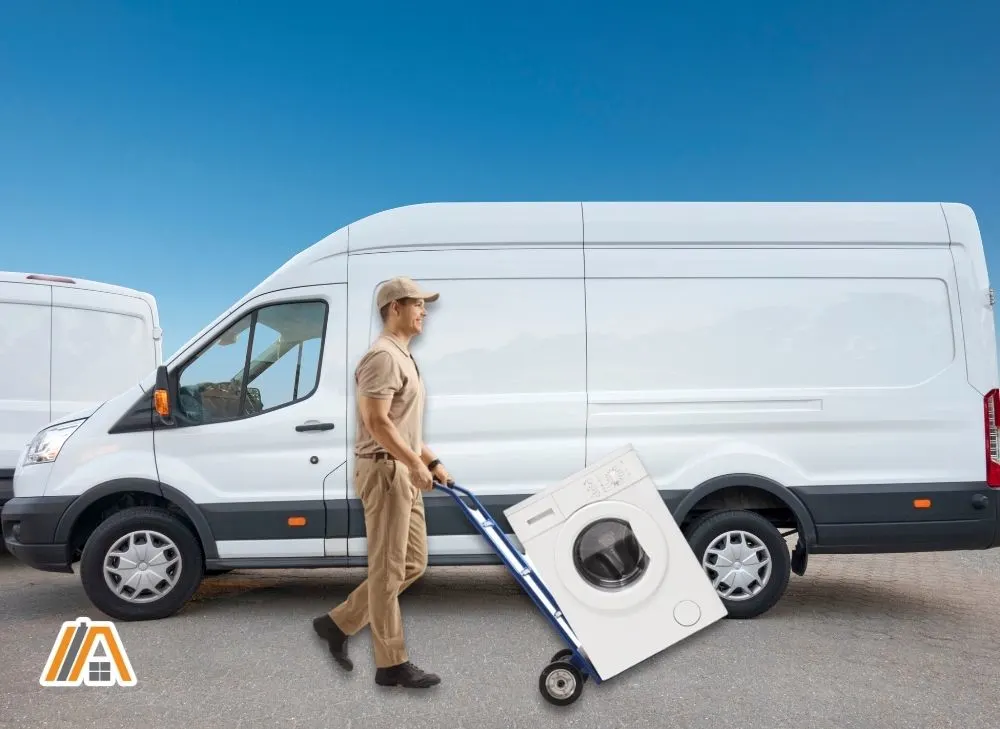
Most manufacturers will have guidelines for transporting their products. Following these guidelines will ensure safe transport for your dryer. However, they usually only preset the absolute safest way to do it as opposed to the only safe way.
Dryer manufacturers do not recommend transporting these machines laying down. Still, it is understood that this is not always possible.
Manufacturers understand that dryers are cumbersome to move, and they design their appliances to withstand some jostling and being transported while laying on their back or side, albeit only as a last resort.
Transport-Friendly Dryer Design Features
The manufacturers of modern dryers realize that moving a dryer is part of owning a dryer, and so they are designed to handle being transported.
Typical dryers are composed of a cabinet with a door, a rotating dryer drum with bearing brackets, various wiring and electrical components, air ducts, heaters, brackets, and an electric motor with timing belts, filters, and controls.
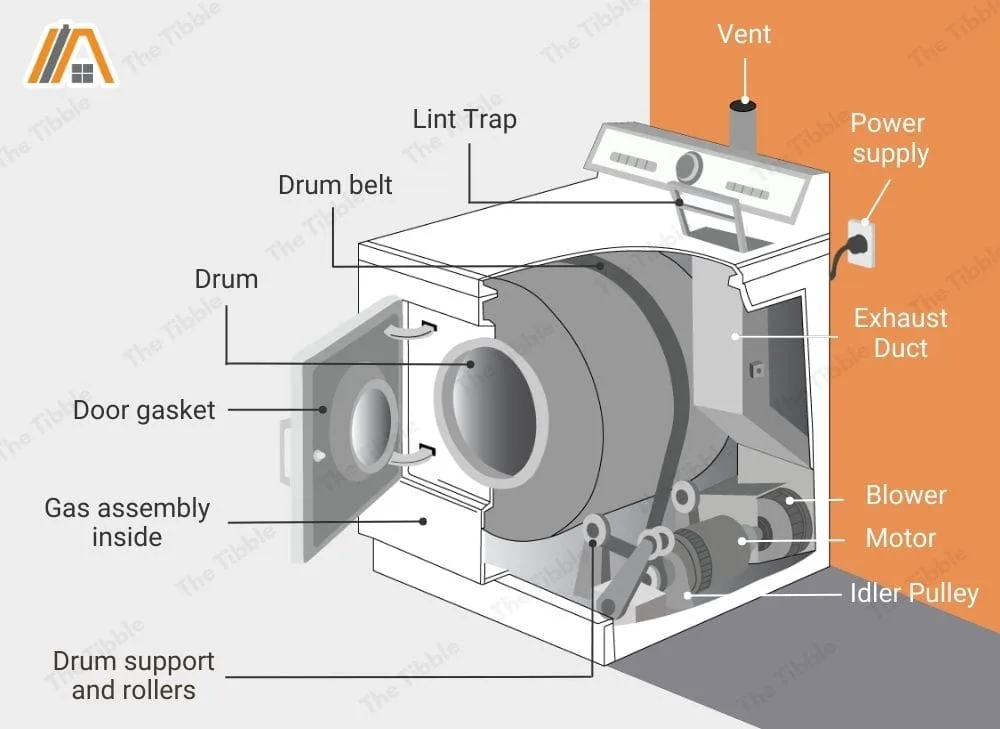
All of these components may seem complex, but they are surprisingly simple.
Every component and feature within a dryer is securely held in place with various clips, brackets, bolts, screws, and connections that will not allow any component to shift within the machine unless one of these features breaks.
Even the dryer drum, which is a heavy and moveable component has special shipping bolts that secure in place.
This means the components are held in place securely enough for the dryer to be transported safely in orientations other than upright.
Will It Damage a Dryer to Be Transported Laying on Its Back?
The internal structure of a dryer makes it possible for them to be transported laying down, but a dryer should never be transported while laying on its back if you can help it.
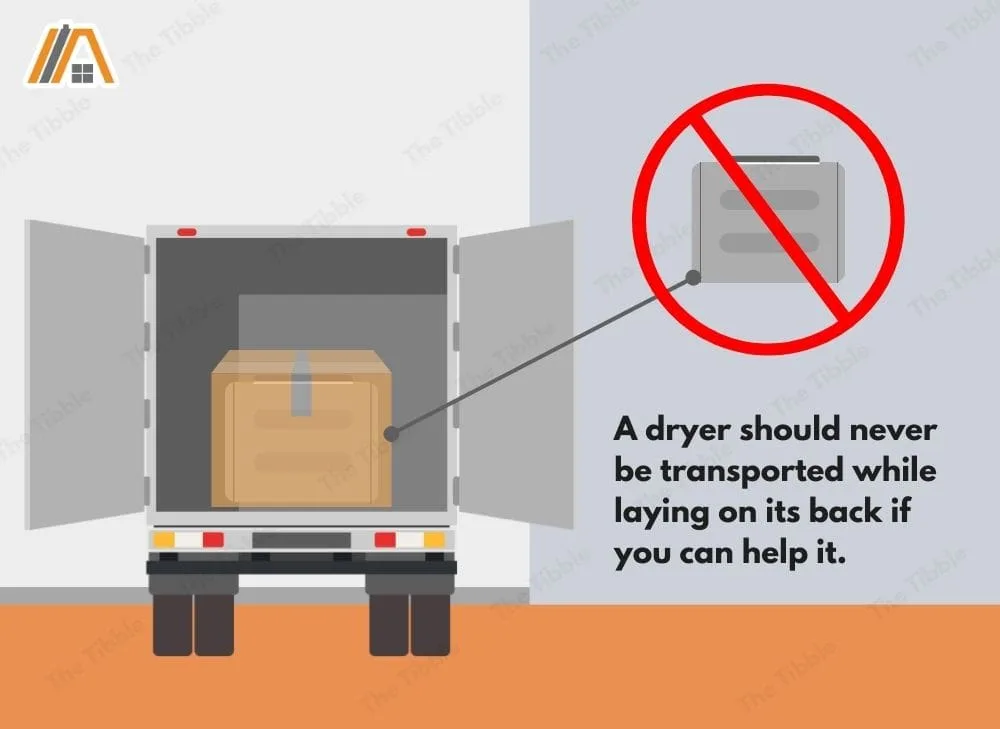
Transporting a dryer laying on its back puts more strain on the components of the dryer than any other position, and the weight of the front-mounted drum pressing on the internal mechanics of the dryer is more than these components are designed to withstand.
If a dryer is placed on its back, it may not lay flat when transported, which makes it probable that the machine will be knocked and jostled more than necessary, which is likely to cause more damage than laying it on its side or keeping it upright.
So, laying a dryer on its back significantly increases the risk of damaging the dryer in transit.
Can a Dryer Be Transported Front Side Down?
Another transportation orientation that should be avoided when moving a dyer is laying it front side down. This orientation places the full weight of the appliance on the door and control panel, which is not ideal.
A dryer laying face down is unstable because the door will not allow it to lay flush, and this is likely to cause the machine to tip onto the control panel. The control panel is very sensitive and will be damaged easily if it is bumped too hard.
The dryer door itself is likely to sustain damage in this orientation as well. The weight of the dryer resting on the door can damage the glass viewport on the door, and if the weight of the dryer shifts while in transit, it may harm the door hinges as well.
As you can see, laying a dryer face down is not a good option when in transit.
Lay the Dryer on Its Side for Transport
If a dryer can not be transported upright, for whatever logistical reason, the next best option is to lay the dryer on its side for transit.
Laying a dryer on its side will cause the least damage to the appliance. This orientation preserves the internal workings of the dryer and does not put unnecessary strain or pressure on any of its components.
The side of a dryer allows the machine to lay flat, which means that it is less likely to be severely jostled when moving, and all of the internal bracings will remain intact. This will prevent the drying from being damaged during transportation.
The only consideration to make when moving a dryer while laying on its side is that the external casing of the machine may sustain scratches, dings, dents, scrapes, or other cosmetic damage, especially if the machine is being transported without a box.
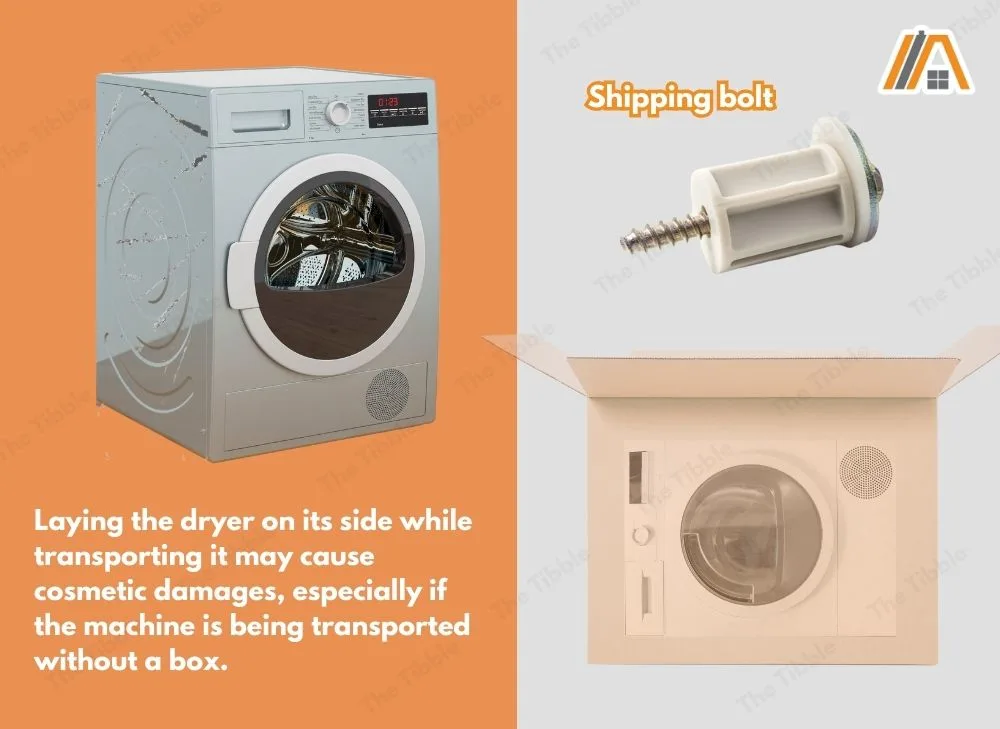
For this reason, it is important to provide the dryer with protective padding when laying it on its side. This could be blankets, sheets, cushions, towels, styrofoam, or even bubble wrap.
This will ensure that the dryer sustains no damage whatsoever during the move.
There is a caveat here. The drum must be secured with the shipping bolts.
Additional Dryer Transport Tips
There are a few other transportation tips to keep in mind when moving a dryer to keep it protected and make the process as safe as possible.
Here are some additional dryer transport tips:
- Secure the dryer properly – using ratchet straps (amazon link), always secure the dryer tightly before transporting it.
- Never place anything on top of the dryer – placing anything on top of the dryer, especially heavy items, are likely to cause damage to the appliance. Furthermore, they may not be adequately secured, which makes them a hazard while moving.
- Drive carefully – this includes taking your time over speed bumps and other obstacles, cornering smoothly, and not braking suddenly.
- Consider your route – avoid particularly rough roads, such as heavily pitted roads, roads with potholes, and gravel roads. Keep to smooth tarmac as much as possible.
- Phone a friend – never attempt to move an appliance as cumbersome and heavy as a dryer without assistance from another person. This is likely to result in harm to you and/or the appliance when moving it.
Transporting a Washer-Dryer Combo Machine
We have established that it is best to transport a dryer in an upright position, but it can be moved while on its side if the situation requires it.
However, the same is not true if a washer-dryer combo machine is being transported.
However, transporting a washer dryer combo machine is not the same as transporting a stand-alone dryer.
Washers are not designed to be transported in any orientation other than upright. The same is true for washer-dryer combo machines.
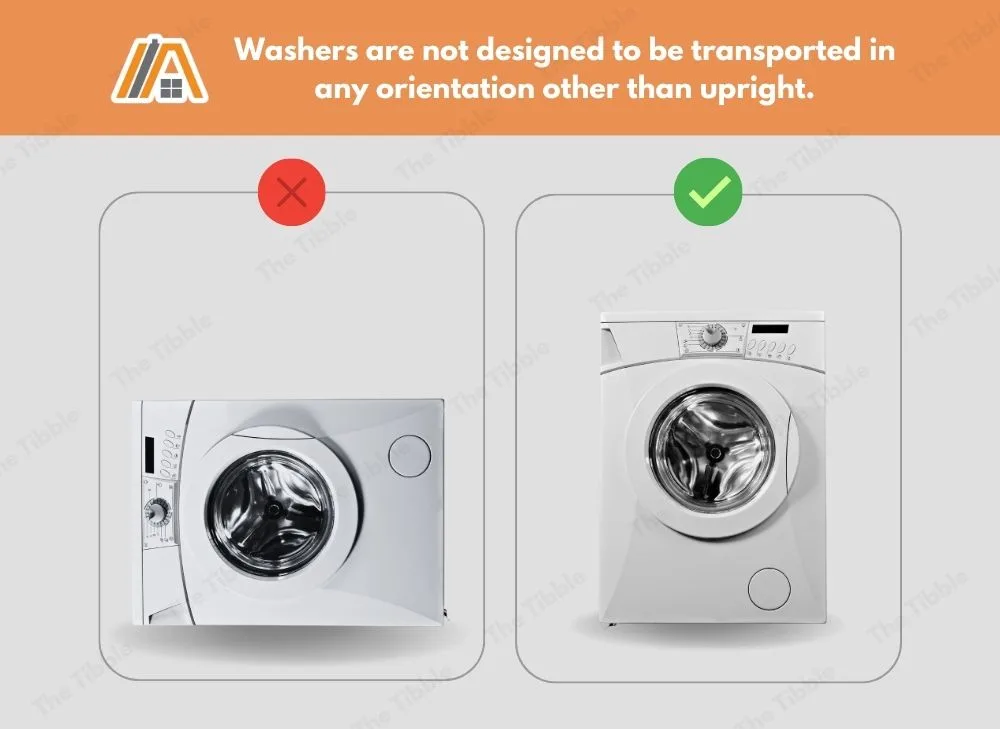
This type of appliance can not be transported on its side or on its back due to the design of the internal drum mechanism.
Washing machines have weights that help stabilize them during the spin cycle. This weight makes it dangerous to place it on its side. It increases the chance that the drum will swing and hit the sides of the casing.
If the drum and casing bump against one another too hard, it may cause damage to either component, but it is more likely to loosen the support pads within the machine or damage the suspension that supports and balances the internal drum.
Is It Ok to Transport a Water Heater Laying Down
Can I Transport a Water Softener Laying Down
Sources
https://products.geappliances.com/appliance/gea-support-search-content?contentId=18373
https://www.hunker.com/13410326/can-a-dryer-be-laid-down-on-its-side
https://findanyanswer.com/can-you-lay-a-washing-machine-down-to-transport
